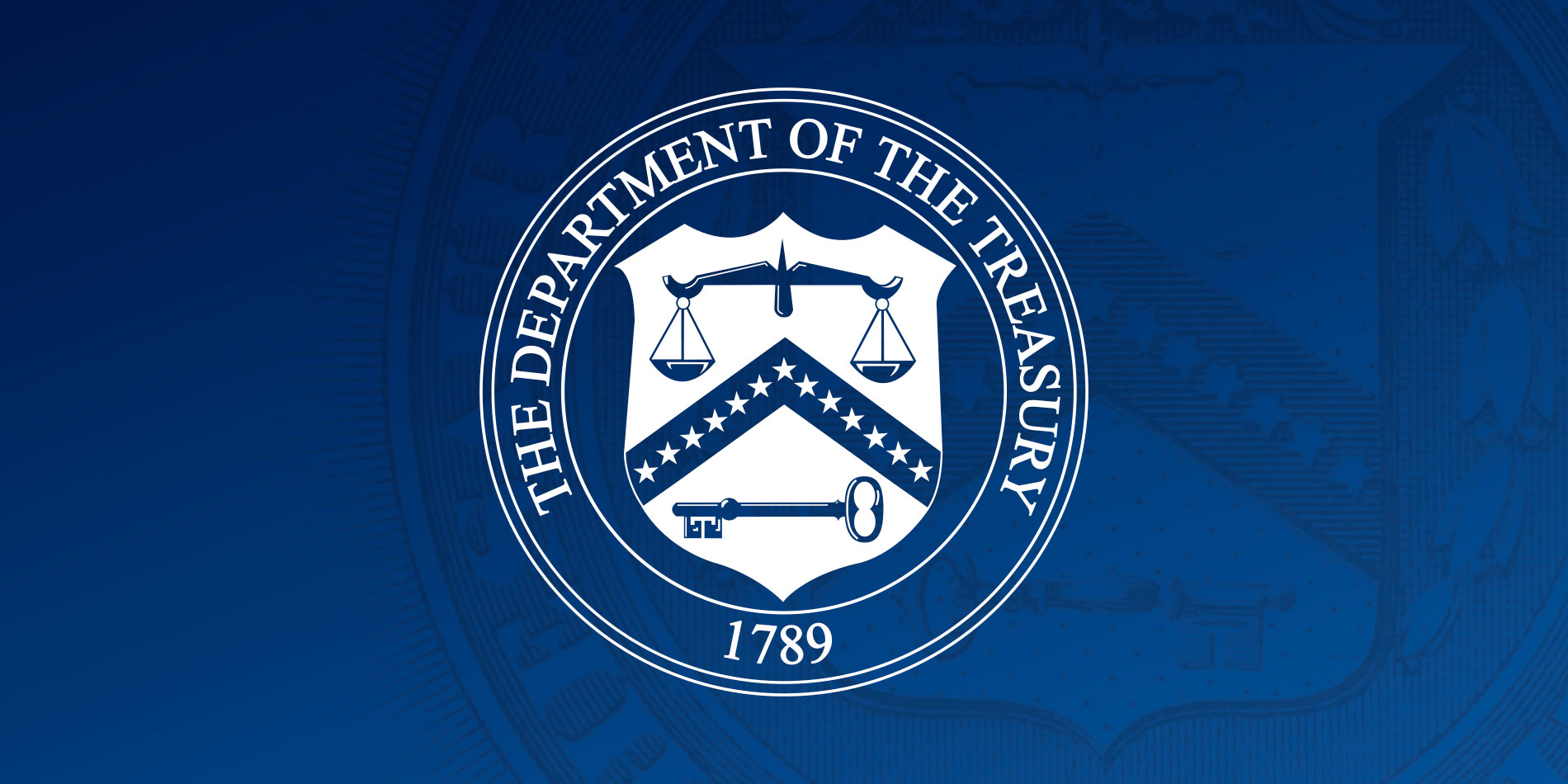As Prepared for Delivery
Thank you for that kind introduction. I’m thrilled to be in Hanoi for my first visit to Vietnam as Treasury Secretary. And I’m thankful to the U.S.-ASEAN Business Council and the companies here for your warm welcome.
In 1995, the United States and Vietnam normalized our diplomatic relations. In the 28 years since, we’ve seen a remarkable transformation sweep this country – from here in Hanoi down to Ho Chi Minh City. This economic boom has been driven by the hard work and talent of the Vietnamese people. And it has been catalyzed by the engine of market reforms and global trade and investment. Vietnam is now a key player on the global economic stage and serves in a critical role in many vital global supply chains. During this trip, I have seen firsthand the dynamism and energy that has propelled your economic development. This undeniable strength will help you achieve your goal of becoming a high-income country by 2045.
The United States has been your steadfast partner. At the turn of the century, we were proud to sign a robust bilateral trade agreement to expand our economic relationship. In 2007, Vietnam joined the World Trade Organization. Since then, our relationship has only broadened and deepened. Our trade now encompasses everything from machinery to textiles to electronic components. Many of America’s largest companies – like Apple and Google – have a significant and growing presence in Vietnam. For the past two decades, trade between our two countries grew at nearly 25 percent a year. That’s an astounding rate. Not only has U.S. imports of Vietnamese goods skyrocketed, but today, the U.S. exports nearly 20 times more to Vietnam than in 2002.
There is no sign that this momentum is slowing. Our goods trade reached a record high last year. I believe this strong economic relationship is possible because it is founded on mutual trust: it stems from our work to address the legacies of the war and is underpinned by the close and growing links between our peoples.
Today, I’d like to speak about how our economic partnership has grown even more important over the past few years. Since 2020, our countries – and the entire world – have faced a series of historic economic, public health, and geopolitical shocks. In response, President Biden and I are advancing an agenda to strengthen our economic resilience. A driving principle of this agenda is to deepen U.S. engagement and cooperation with a broad network of reliable economic partners in areas like trade and climate. These efforts are not only focused on advanced economies – but also on developing countries and emerging markets like Vietnam.
I believe that this effort is good for the United States. And it’s good for Vietnam and other countries as well.
Economic Resilience Agenda
Let me explain.
In 2020, the world was struck by a once-in-a-century global pandemic. It claimed millions of lives and brought the world economy to a standstill. Two years later, Russia launched a barbaric full-scale invasion of Ukraine. This war has led to the loss of many innocent Ukrainian lives and destroyed cities and civilian infrastructure. And it has generated seismic volatility in the prices of commodities like food and oil. The impacts of these shocks have reverberated around the world – from here in Southeast Asia to Africa to North America.
While the causes of these disruptions are global, their impacts are personal. The COVID pandemic caused the first rollback in extreme poverty gains in decades. It also disrupted global supply chains, preventing families and businesses from getting the essential goods that they relied on. These shocks also contributed to global inflation – putting tremendous pressure on household budgets that were already tight to begin with.
President Biden and I believe that this experience compels us to advance a comprehensive economic resilience agenda. Our efforts start at home – but they do not stop there. Strengthening our economic resilience requires increasing cooperation and engagement with our international partners against the risks that we all face. In an interconnected world, disruptions in one region can have cascading economic impacts on the opposite side of the globe. Building true resilience in the United States requires bolstering resilience among our allies and partners.
Trade Resilience
Our Administration’s focus has been to build resilience in sectors that are critical to our national and economic security. Let me speak specifically on our trade and climate efforts.
On trade, our Administration is pursuing an approach called “friendshoring” – aimed at building secure and reliable supply chains. Our goal is to reduce the vulnerability of our economy to supply shocks in the production of critical goods, especially due to over-concentration, geopolitical and security risks, and violations of human rights. To do so, we are investing at home to build redundancies in our supply chains. Driven by President Biden’s historic laws, we have already seen a remarkable boom in manufacturing facilities in America. A Treasury analysis shows that real manufacturing construction in the U.S. has doubled since the end of 2021. But we do not seek to build everything in America. Rather, we believe that long-term economic resilience requires diversified global supply chains. This means deepening our economic integration with the large number of countries we can count on – including Vietnam.
A priority is to build resilience in our semiconductor supply chain. Semiconductors are essential building blocks of the modern economy. They are critical to the production of everyday consumer products like cars and refrigerators – and the development of cutting-edge technologies like advanced robotics. And yet, virtually all manufacturing of the most sophisticated chips is concentrated in East Asia. Recent experience demonstrates the economic pain that disruption of this key supply chain can cause. One study estimates that the chip shortage during the pandemic likely contributed to worldwide revenue losses of over $500 billion from 2020 to 2022. The impact was particularly acute for the automotive industry – an industry with a large presence in Vietnam. In 2021 alone, this single industry was estimated to have lost $210 billion in global revenue.
The United States is taking a comprehensive approach to diversify and strengthen our semiconductor ecosystem. We are first investing in our own domestic capacities through the CHIPS and Science Act. This law provides incentives for manufacturers to build fabrication plants in the United States. But no country can or should do this alone. We are working with our partner countries to ramp up their investments as well. For example, we have dedicated a new $500 million fund for international semiconductor and telecom projects under the CHIPS Act. This fund can help countries in the Indo-Pacific develop their own diverse and resilient semiconductor supply chains. Greater diversification benefits everyone. When activity moves from concentrated or risky parts of the global supply chain, it puts the U.S. and world economy in a more secure position. As we see in Vietnam, it can also promote economic and workforce development.
Over the past decade, Vietnam has emerged as a critical node in the global semiconductor supply chain. And investments are only accelerating. Less than an hour’s drive from here in Bac Ninh province, Amkor – an Arizona-based company – will soon fully open a state-of-the-art mega factory for semiconductor assembly and testing. Down in the southern province of Dong Nai, another American company, Onsemi, produces chips that are used in cars halfway around the world. Nearby – in Saigon Hi-Tech Park – sits the largest Intel assembly and testing facility in the world. Many of the companies investing in Vietnam are also building up their capacity and employment in the United States as well.
More broadly, Vietnam and the United States have worked together to bolster resilient supply chains with other countries. We are two of over a dozen countries that are part of the Indo-Pacific Economic Framework. Two months ago, the Framework’s member countries announced a proposed agreement to strengthen supply chain resilience. Under the agreement, partners would collaborate to build a collective understanding of supply chain vulnerabilities, improve crisis response, and identify opportunities for technical assistance and capacity building. Notably, it also emphasizes the importance of expanding the benefits of these efforts to workers and small businesses, including by promoting worker training and worker rights.
As we undertake these supply chain efforts, let me be very clear: friendshoring is not for an exclusive club of countries. It is open and inclusive of advanced economies, emerging markets, and developing countries alike. The United States is working to strengthen – not weaken – our ties with the emerging and developing world, as demonstrated by our partnership with Vietnam. That’s why we have launched new initiatives to invest in the development of our partner countries. This includes taking part in the G7’s pledge to mobilize $600 billion in infrastructure investment over the next few years through the Partnership for Global Infrastructure and Investment.
Climate Resilience
Reducing the risk of trade shocks is not the only important challenge that we face. The worsening climate crisis poses severe risks not only to the reliability of critical supplies. It also presents risks to the broader macroeconomy and the health and wellbeing of our communities. As the world continues to warm, climate change threatens to reduce the productive capacity of communities across the world. Beyond these chronic impacts, climate change can also increase the frequency and intensity of acute supply shocks – like heat waves that exacerbate energy shortages and floods and hurricanes that devastate entire regions. We also know that the climate crisis disproportionately impacts the most vulnerable and poorest among us.
There is a robust, scientifically backed economic case for why we must take immediate action to mitigate and adapt to climate change – and why we must help others do so as well. In the United States, President Biden signed the Inflation Reduction Act into law last year. The IRA is the boldest action we have taken to address climate change and meet our commitments under the Paris Agreement. By accelerating our transition to a clean energy economy, the law is also a critical step toward strengthening U.S. energy security. And it will have impacts across the world by pushing down the cost curves of new clean technologies and speeding up their adoption. This domestic investment – alongside President Biden’s pledge to double international climate assistance – makes this Administration a leader in combatting the climate crisis.
Just as we build resilience for ourselves, we are committed to helping other countries build their own resilience as well. The United States is proud to support Vietnam’s transition toward a net-zero economy by 2050. Last year, Vietnam and the International Partners Group, of which the United States is a member, launched a Just Energy Transition Partnership to mobilize over $15 billion in public and private financing to accelerate the clean energy transition here in Vietnam. We are encouraged by Vietnam’s ambitious new targets under the JETP. Now, it is vital that we intensify our cooperation to build momentum for these efforts in Vietnam, evaluate project opportunities with the multilateral development banks, and deliver a Resource Mobilization Plan that provides a roadmap for implementation. Beyond mitigating the climate crisis, this partnership with Vietnam can help catalyze the development of new cutting-edge, clean energy industries. It can broaden economic opportunity for Vietnamese workers.
More broadly, the United States is continuing to work to meet President Biden’s commitment of providing more than $11 billion in annual international public climate finance by 2024. We are also focused on achieving the collective goal by developed countries to mobilize $100 billion in annual climate finance. We are pressing the international financial institutions to make reforms that are unlocking new funding for climate. For example, the U.S. is working with a broad coalition of countries to evolve the multilateral development bank system to more readily combat 21st-century global challenges like climate change. As a result of our initiative, the World Bank is more actively supporting countries in their fight against climate change and evolving the way it operates to better combat poverty and support development.
Closing
To close: I’m thrilled to be in Vietnam with you today. Your country has been one of the brightest development stories in the past decade. The United States is proud to continue to support and partner with you to build economic prosperity for our countries. A strong economic partnership is in both of our interests. Over the past few years, our lives and livelihoods have been disrupted by historic economic shocks. These shocks have impacted us all; they have not respected borders. This hard experience has taught us that economic resilience must be a key part of our economic strategy – and that true long-term resilience can only come through deepening international engagement with a broad range of countries. That includes Vietnam. Despite our difficult and complicated history, I am optimistic about the economic future we are building together.
Thank you for having me. I look forward to working with all of you to strengthen our economic partnership.
###
Official news published at https://home.treasury.gov/news/press-releases/jy1639


